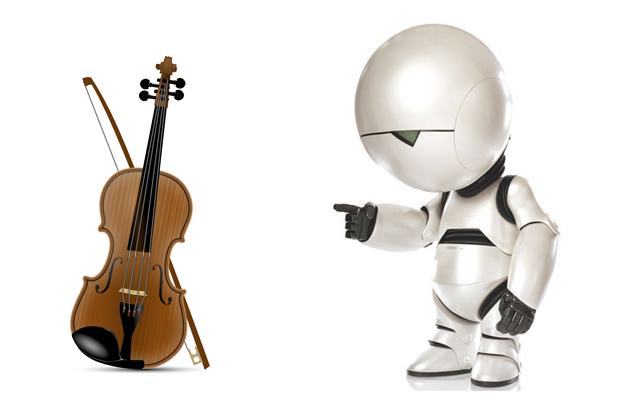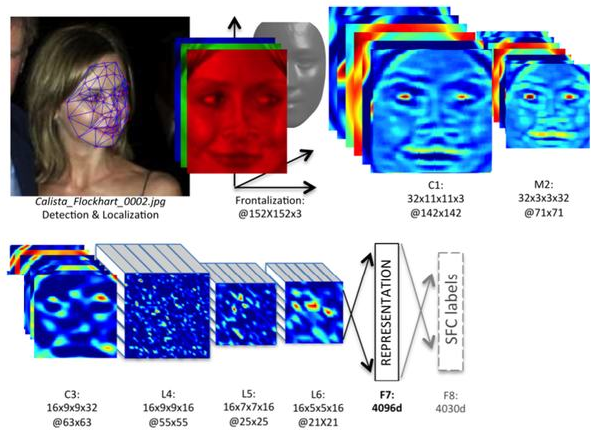Can a robot be taught to play the violin? How about playing computer games?

Robots entered our lives almost imperceptibly. Not so long ago, the word 'robot' was as fantastic as 'blaster' or 'telepathy'. And now it is nothing more than a familiar technical term, not much different from the words 'computer' or 'smartphone'. And although in everyday life we do not come across robots too often, there is nothing surprising in them for you and me for a long time.
Another thing is that earlier under the word 'robot' we meant something much more than an automatic vacuum cleaner. Imagination drew a fantastic humanoid creature with artificial intelligence, not a programmable toy. Such robots could not only follow the algorithms that were once laid down in them, but self-learn, develop and perform complex tasks that require a creative approach.
At first glance, it seems that such robots will not appear in the world soon. But in fact, nothing is fundamentally impossible in this for a long time. All the necessary technologies have been around for a long time, albeit in a noticeably 'raw' form.
For example, let's try to imagine what it takes to create a robot musician that plays the violin.
First of all, you need to teach him the basics of playing this instrument and teach musical notation. The violin is a rather complicated instrument, and even people are not given it easy.
In fact, this task has long been solved. Moreover, theoretically, such a device can be made independently. An example is the recent news of the Ro-bow, a musician robot created by a retired Dutch engineer. Although Ro-bow does not look the most attractive way yet, he plays the violin quite well. And he is able to play almost any melody, from leisurely old songs to fiery Irish jigs.
[iframe url = '// www.youtube.com/embed/EPTUM2_bxnQ' width = '640 ″ height =' 360 ″ scrolling = 'no' frameborder = '0 ″ marginheight =' 0 ']
Link to news
And here is an example of a humanoid robot violinist presented by the company Toyota back in 2007.
[iframe url = '// www.youtube.com/embed/klzSN2giygY' width = '640 ″ height =' 360 ″ scrolling = 'no' frameborder = '0 ″ marginheight =' 0 ']
Link to news
Of course, teaching a robot to extract sounds from a musical instrument is not even half the battle. Music is much more than just playing with notes. And the difference between mechanical performance and the playing of a live musician will be about the same as between the singing of an opera singer and the automatic voice acting of the text using a smartphone.
First, the robot must learn to improvise, and not just strictly follow the written program. Secondly, to track the reaction of listeners, independently drawing conclusions about how successful the performance turned out to be and where it is worth changing something in it.
There is nothing fundamentally impossible here either. Although one can only dream of real artificial intelligence in our time, work on various self-learning algorithms has been going on for a long time.
For example, just last week Google demonstrated a self-learning system capable of independently going through simple games like 'Arkanoid'.
[iframe url = '// www.youtube.com/embed/cjpEIotvwFY' width = '640 ″ height =' 360 ″ scrolling = 'no' frameborder = '0 ″ marginheight =' 0 ']
The result of her work can be seen in the video just above. I will note that I never explained the rules of the game to her in advance and did not give any instructions. Even the goal of the game at first remained a complete mystery to the system. Not surprisingly, the first couple of hundred attempts to complete the game ended up rather sad. But if you are able to draw conclusions from mistakes and try to step on the same rake for you, then a negative result is also a result. And this program Google clearly knows how to do. By the 600th attempt, the system not only figured out the controls and rules of the game, but also figured out the most successful strategy, with which it passed the level almost perfectly.
At the moment the program only 'plays' old 2D Atari games. The next step will be 3D games from the early 90s.
Link to news
The main problem is that the robotic musician will not have such clear criteria for success and failure. And to understand how successful the improvisation turned out and which part of the audience were especially pleased with it will be very difficult.
The only way to somehow evaluate your performance is to analyze the emotions of the listeners. And there is nothing fantastic in this either. Facial recognition algorithms are improving every year. And such functions as smile recognition or automatic photo selection, where all people have open eyes, have long been used even in the most ordinary phones.
For example, here is one of the articles on the pros and cons of different approaches to face recognition – http://habrahabr.ru/company/synesis/blog/238129/
Recognizing a face is one thing, of course. And it is quite another to determine the emotions of a person, which each of us manifests in a slightly different way.
A dozen years ago, this would have become a big problem, because training a robot would require a huge database with photographs of millions of people. And in our time, such a database has long been, and it is freely available. We are talking about social networks, where people reveal an unimaginable amount of information about themselves and upload thousands of all kinds of 'selfies'.

At the moment, self-learning programs are gradually learning to recognize the basic emotions of people, both from their photographs and from text messages. It is too early to talk about a revolution in this direction, but the work is in full swing. And at the very least, artificial intelligence has already learned to cope with this task.
Link to news
And it is even easier to recognize cheers of approval – it is possible now. For example, recently it became known that the famous Barbie doll will soon learn to talk to children.

The principle of its operation is similar to voice assistants like Siri – all words heard by the program are recorded and sent to a remote server, where they are decrypted using special algorithms. The only difference is that Barbie will be 'sharpened' precisely for understanding children's speech, with many mistakes and incorrect pronunciation of words. To do this, a huge database of examples of children's conversations is stored on the servers.
Link to news

